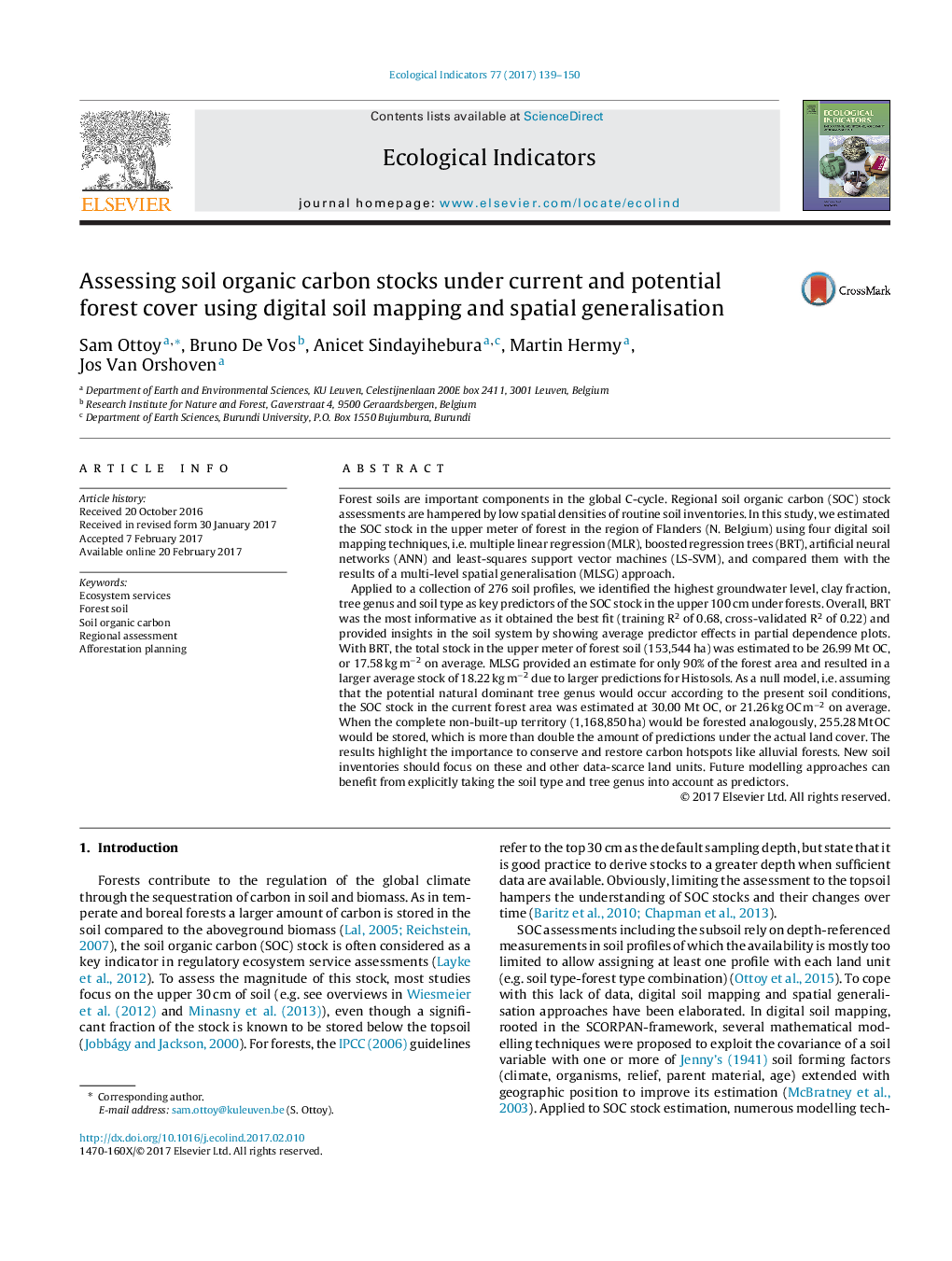| کد مقاله | کد نشریه | سال انتشار | مقاله انگلیسی | نسخه تمام متن |
|---|---|---|---|---|
| 5741718 | 1617125 | 2017 | 12 صفحه PDF | دانلود رایگان |
- Low spatial density of soil inventories hampers upscaling of ecosystem service indicators.
- SOC stocks in Flanders' forests were best predicted by boosted regression trees and multi-level spatial generalisation.
- Groundwater level, soil type, tree genus and clay fraction were identified as key predictors.
- Soil inventories should focus on data-scarce land units and carbon hotspots.
- Modeling approaches benefit from considering hotspot characteristics explicitly.
Forest soils are important components in the global C-cycle. Regional soil organic carbon (SOC) stock assessments are hampered by low spatial densities of routine soil inventories. In this study, we estimated the SOC stock in the upper meter of forest in the region of Flanders (N. Belgium) using four digital soil mapping techniques, i.e. multiple linear regression (MLR), boosted regression trees (BRT), artificial neural networks (ANN) and least-squares support vector machines (LS-SVM), and compared them with the results of a multi-level spatial generalisation (MLSG) approach.Applied to a collection of 276 soil profiles, we identified the highest groundwater level, clay fraction, tree genus and soil type as key predictors of the SOC stock in the upper 100 cm under forests. Overall, BRT was the most informative as it obtained the best fit (training R2 of 0.68, cross-validated R2 of 0.22) and provided insights in the soil system by showing average predictor effects in partial dependence plots. With BRT, the total stock in the upper meter of forest soil (153,544 ha) was estimated to be 26.99 Mt OC, or 17.58 kg mâ2 on average. MLSG provided an estimate for only 90% of the forest area and resulted in a larger average stock of 18.22 kg mâ2 due to larger predictions for Histosols. As a null model, i.e. assuming that the potential natural dominant tree genus would occur according to the present soil conditions, the SOC stock in the current forest area was estimated at 30.00 Mt OC, or 21.26 kg OC mâ2 on average. When the complete non-built-up territory (1,168,850 ha) would be forested analogously, 255.28 Mt OC would be stored, which is more than double the amount of predictions under the actual land cover. The results highlight the importance to conserve and restore carbon hotspots like alluvial forests. New soil inventories should focus on these and other data-scarce land units. Future modelling approaches can benefit from explicitly taking the soil type and tree genus into account as predictors.
Journal: Ecological Indicators - Volume 77, June 2017, Pages 139-150
